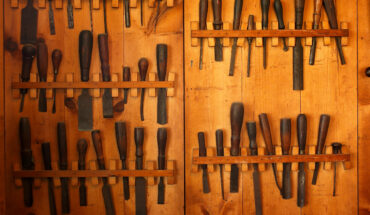With GPS devices triangulating their position at the touch of a button, today’s sailors rarely worry about navigation at sea. But in the years before this technology, ships’ crews relied on the sun, the stars, and a skilled crewmember to find their way.
GPS technology actually grew from the techniques practiced by 19th-century sailors. Using a device like a sextant, a crewmember would measure the angle between the ship and certain objects in the sky. A chronometer would also provide highly precise timekeeping, even after months at sea. With this information, plus a few calculations from nautical charts and tables, sailors were able to triangulate their position with remarkable certainty.
The Museum’s Treworgy Planetarium and Nautical Instruments Shop showcase these and other intricate tools used hundreds of years ago. Visitors can climb aboard vessels such as the Charles W. Morgan and stand in the very place that sailors consulted their instruments and charts. Peering out at the dock and village, we can only start to imagine the lifeline these tools represented for sailors at sea.

